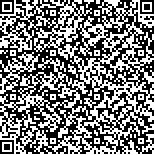下载中心
优秀审稿专家
优秀论文
相关链接
摘要

在遥感产品真实性检验中,地面站点网络的连续观测数据是进行算法及产品验证的重要数据来源.通常站点观测的空间范围有限,测量数据直接与产品像元值比较会存在尺度误差.因此,分析与评价站点观测在多大尺度上具有代表性,对有效利用观测数据进行算法与产品精度评价具有重要意义.目前全球地面观测站点类型繁多,虽有一定的代表性评价方法,但各类方法的优缺点及适用参数、适用条件各异.因此,为使站点观测代表性评价方法广泛的应用于地面站点观测,进而开展更加有效的遥感产品真实性检验,有必要对当前站点代表性评价方法进行系统的综述及梳理.本文首先阐述遥感产品真实性检验对站点连续观测数据的需求以及站点观测代表性评价的必要性.其次,分析站点观测代表性的评价指标特征,包含点面特征比较以及空间异质性两种评价指标.基于不同评价指标,综述了各种研究方法在站点观测数据代表性评价中的应用,即对点面特征比较评价的物理模型法、站点与区域分布图统计评价法和多站点多时相联合评价法,以及对空间异质性进行评价的一阶统计法和半方差函数法,总结不同代表性评价方法的原理及优缺点.然后,介绍了目前站点数据及代表性评价方法在蒸散、反照率和地表温度等遥感产品真实性检验中的应用,并且以黑河中游农田区观测LAI为例,分析了基于不同评价指标的不同评价方法的特点.最后,针对当前观测代表性评价方法面临的问题提出了下一步的研究方向.
Continuous observations from ground station networks are important in the validation of remote sensing products and algorithms. However, owing to the spatial mismatch between the point observation of ground stations and the pixel observation of remote sensing products, a direct comparison tends to incur scale errors. Therefore, the evaluation of the representativeness of ground station measurements for the reasonable validation of remote sensing products is necessary. At present, various observation stations are situated all over the world, and many representativeness evaluation methods have been developed. To maximize the representativeness evaluation methods for the reasonable validation of remote sensing products, we review the present methods for evaluating observation representativeness. The indicators for evaluating observation representativeness can be divided into two classes: point-to-area consistency indicator and spatial heterogeneity indicator. The first indicator evaluates observation representativeness by analyzing the consistency between ground point observations and observations in the pixel area. Generally, three specific classes of methods calculate the point-to-area consistency indicator. The first class is based on physical models, such as the footprint model, and is used for evapotranspiration measurements. The second class evaluates representativeness based on distribution maps. The last class determines observation representativeness by combining multi-stations and multi-observations in the computation of the average difference between a specific station and other stations. The spatial heterogeneity indicator is applied to evaluate ground observation representativeness by assessing spatial variations. Generally, two classes of methods obtain spatial heterogeneity: first-order statistics and semivariogram. The application of representativeness evaluation methods in validating remote sensing products is reviewed. In the validation of evapotranspiration, surface albedo, radiation, LAI products, etc., the representativeness of ground observations is evaluated to obtain the accurate validation data. A case study is then conducted in the middle reach of the Heihe River Basin for the LAI observations. The point-to-area consistency indicator SSE and the spatial heterogeneity indicator Sill are calculated at the product pixel scale. Result shows that the degree of representativeness characterized by the SSE and Sill is inconsistent for different pixels at the 1 km scale. Thus, the indicator for evaluating the representativeness of various station-observed parameters should be properly selected. This paper reviewed the methods for evaluating the representativeness of ground station observations and their application in remote sensing product validation. The widely used indicators and the methods for calculating indicators were reviewed first, and the advantages and disadvantages of the methods were summarized. The applications of the methods in the validation of remote sensing products were analyzed, and a case study on the difference of the two indicators in evaluating spatial representativeness for LAI validation was performed in the middle reach of the Heihe River Basin. The review revealed that current indicators and methods are usually suitable for specific parameters and that individualized research on such parameters is necessary. Only a few studies on the evaluation of global ground station networks have been conducted for global product validation. Currently available methods for evaluating observation representativeness must be improved further.

